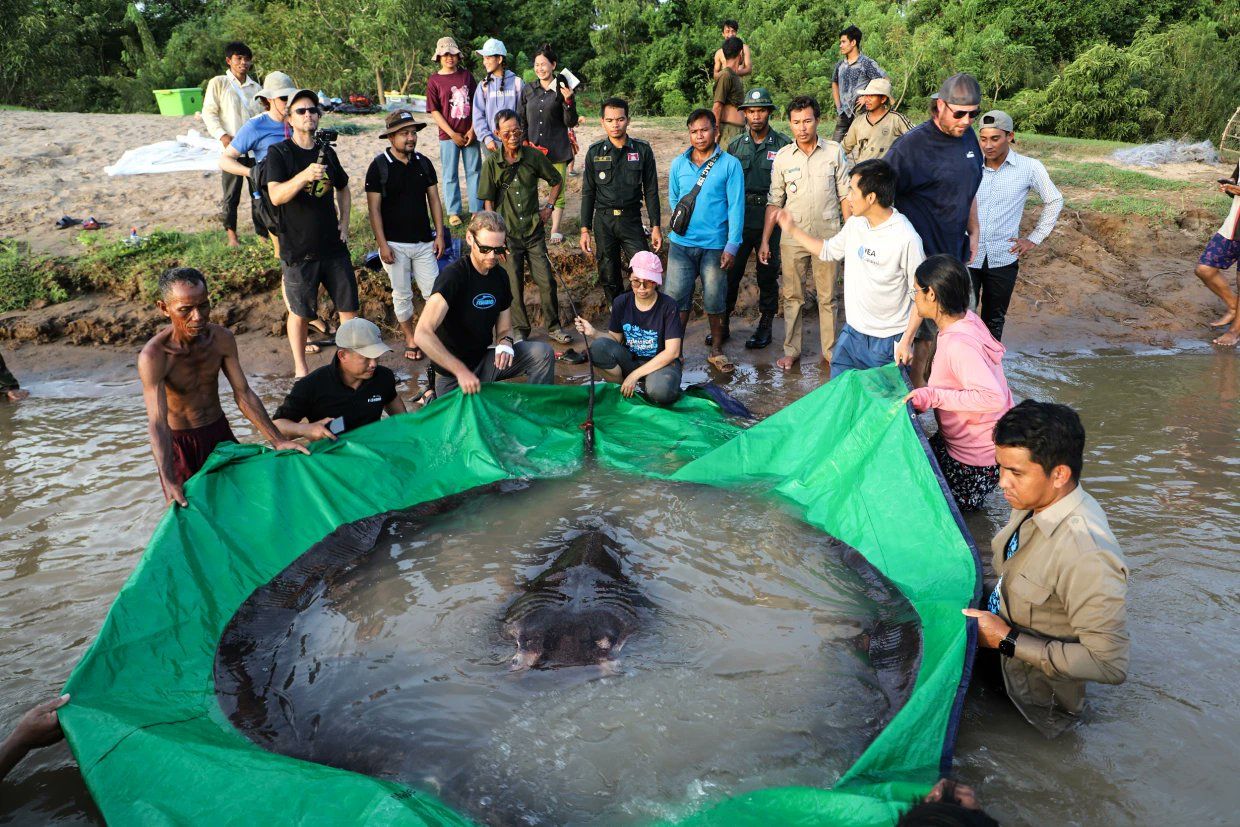A fisherman caught a stingray by accident in the Mekong River, in the northern province of Stung Treng, Cambodia, as per USA Today. This might be the largest freshwater fish ever caught.
The stingray is 13-foot-long and weighs 661 pounds. It was caught on June 13 by a 42-year-old fisherman, as per USA Today.
Zeb Hogan, a fish biologist at the University of Reno, Nevada, told the publication “Wonders of the Mekong research team tagged and released the giant stingray back into the Mekong River”, adding, “We will be able to track its movements over the next year.”
Also Read | Man develops 1 million strong ‘frog army’, causes widespread worry
He told the National Geographic, “It proves these underwater leviathans, which are in critical danger, still exist”.
Hogan, who hosts ‘Monster Fish’ on the show, said this catch “highlights how little we know about a lot of these giant freshwater fish. You have a fish that’s now the record holder for the world’s largest freshwater fish, and we know little about it.”
The previous record for the world’s largest freshwater fish was held by a 9-foot-long giant catfish, which was caught in Thailand in 2005. As per the Guinness Book of World Records, it weighed 646 pounds.
Cambodian and American scientists, along with researchers, and officials from the Fisheries Administration measured the stingray from tail to snout, before releasing it back into the water on June 14.
Also Read | Bear gives man high five while passing by cars, video viral on social media
This is not the first time this rare species of fish has been caught in the Mekong River. In May, a similar incident unfurled in Sun Treng itself, when a 397-pound stingray was caught by fishermen.
A team of experts untangled and examined the fish, before releasing it.
Hogan, who leads the US-funded Wonders of the Mekong project said in a statement, “They are unseen worlds, underappreciated and out of sight”. The study group had noted at the time that the area where the stingray was caught, had pools which were up to 80 metres deep, and might be home to larger specimens.







